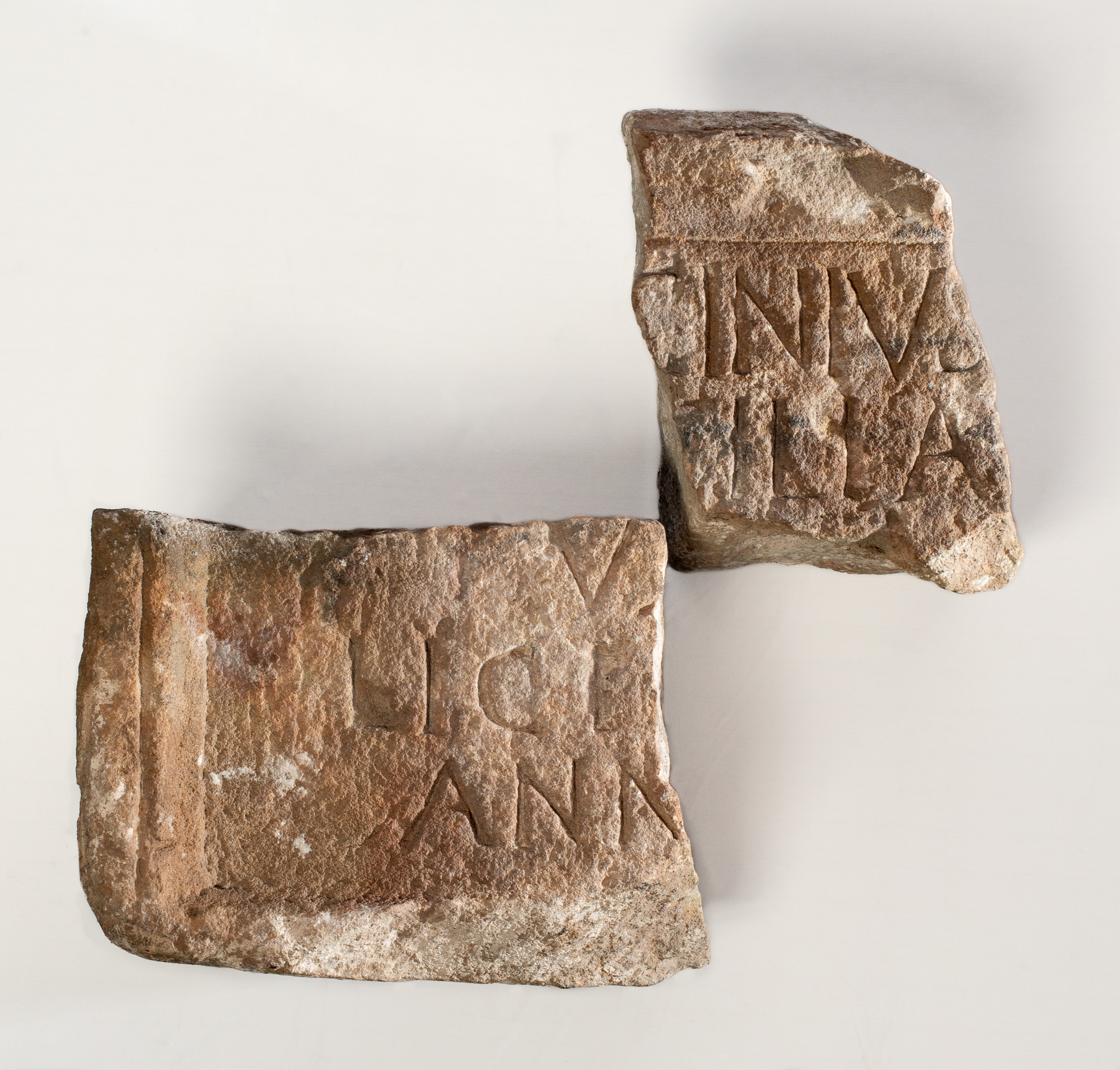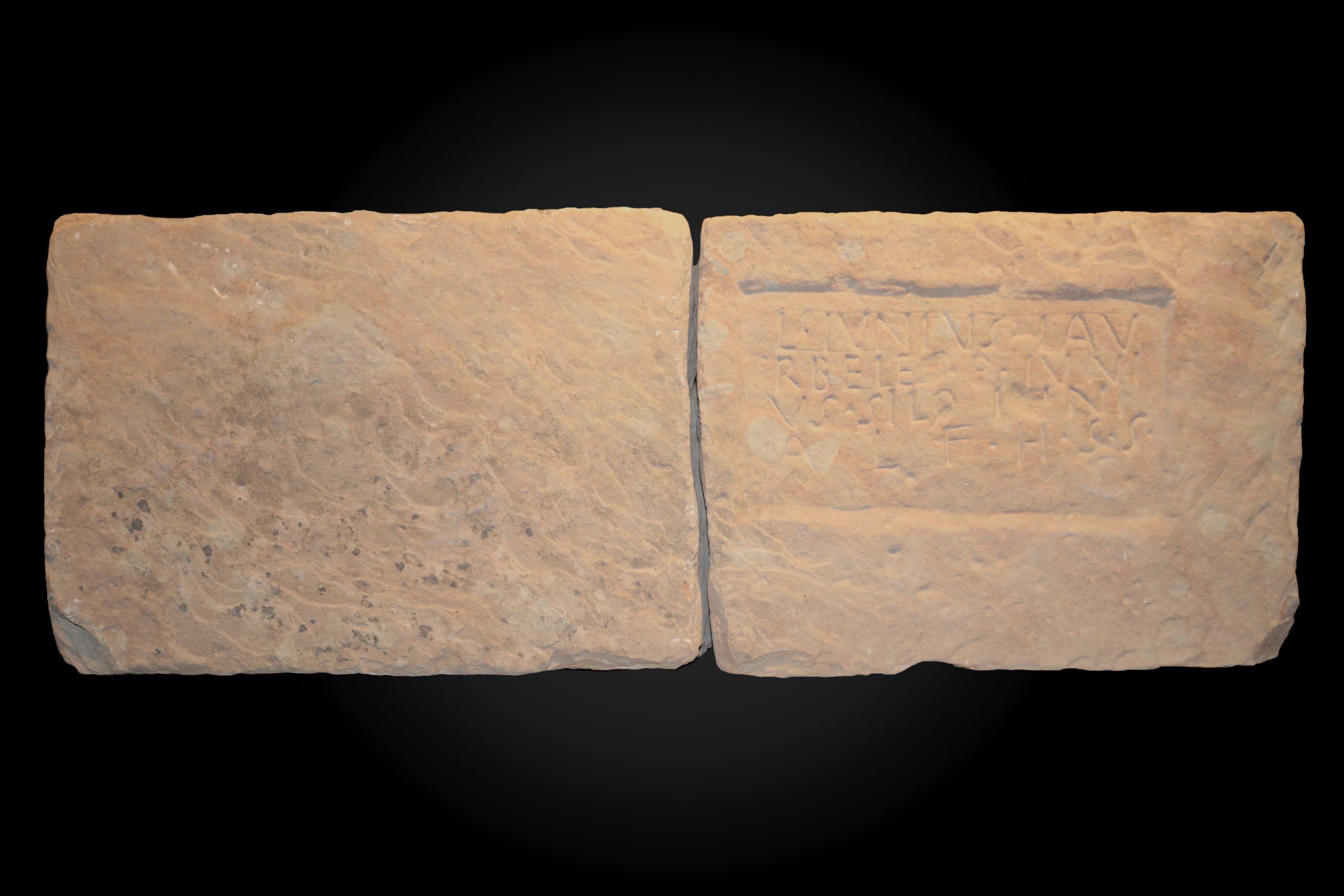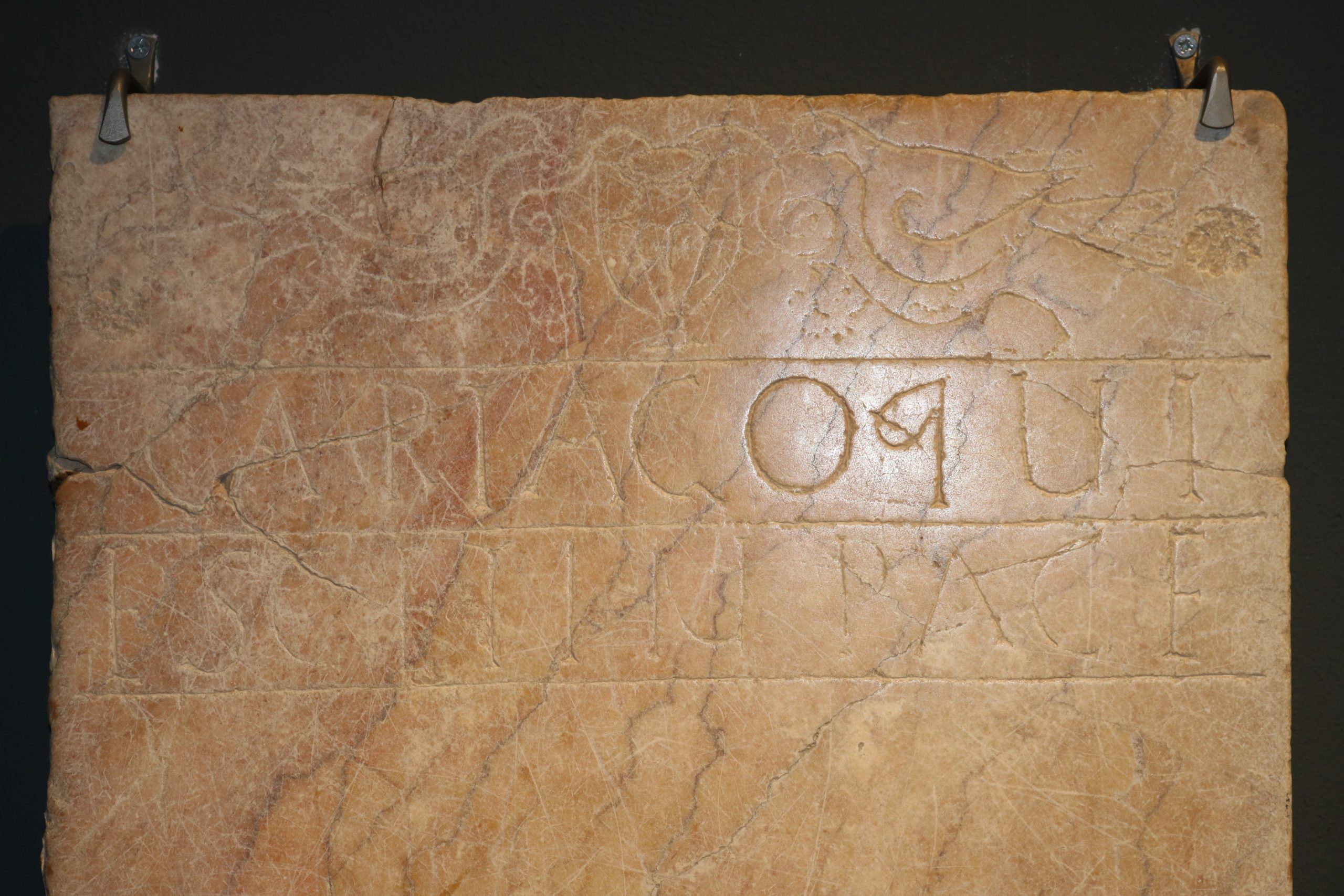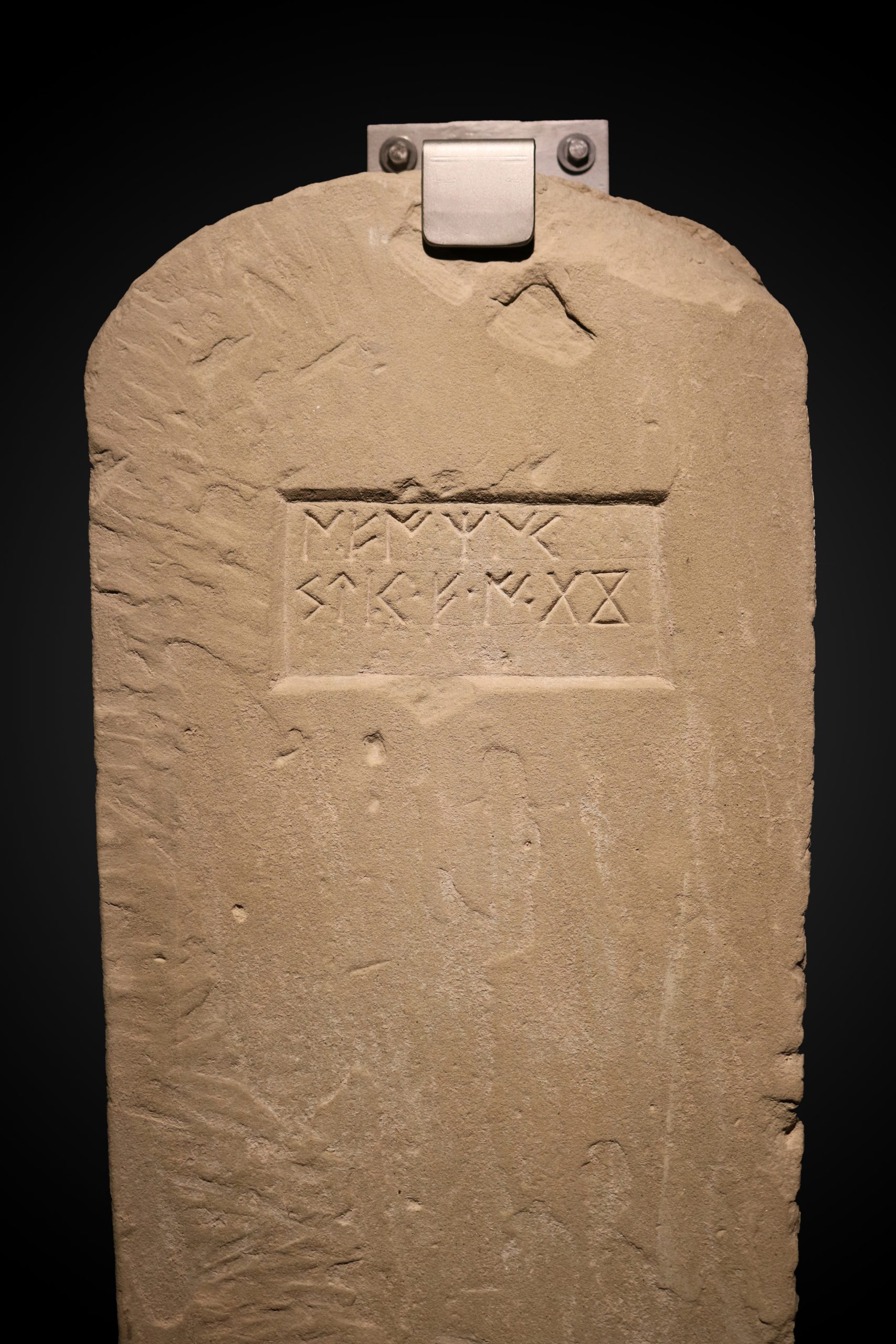- Object type
- tombstone
- Production date
- -10 / 1
- Fabric -
- Culture
- Roman world
- Discovery location
- Barcelona. Carrer Avinyó
- Materials
- sandstone
- Township
- Barcelona (Europa, Espanya, Catalunya, Barcelona, Barcelonès)
- Technique
- carving
- Where is it?
- Exposició permanent
- Dimensions
- 55 x 120 x 28 cm






